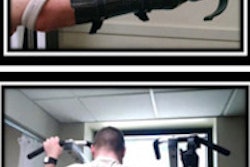A new 3D-printable synthetic ink has been developed that rapidly induces bone regeneration and growth, according to a study published this week in Science Translational Medicine.
The hyperplastic synthetic bone material, which can be easily shaped, could turn out to be very useful for the treatment of bone defects in children, the researchers said.
Bone implantation surgery can be especially painful for children. In both adults and children, bone grafts are often harvested from other parts of the body, leading to complications and pain. Metallic implants can serve as a temporary fix, but they are not a viable long-term solution for growing children.
Adults have options for implants that children do not have, said lead investigator Ramille Shah, PhD, in a statement from Northwestern University. Children who receive implants must undergo future procedures as they grow, possibly leading to years of difficulty.
The 3D-printed biomaterial is a mixture of hydroxyapatite and a biocompatible, biodegradable polymer used in medical applications such as sutures. It shows great promise in in vivo animal models owing to the unique properties of the printed structure. Even though the material is mostly hydroxyapatite, it is hyperelastic and porous at the nano, micro, and macro levels (Sci Transl Med, September 28, 2016, Vol. 8:358).
"Porosity is huge when it comes to tissue regeneration, because you want cells and blood vessels to infiltrate the scaffold," Shah said in the statement. "Our 3D structure has different levels of porosity that is advantageous for its physical and biological properties."



















